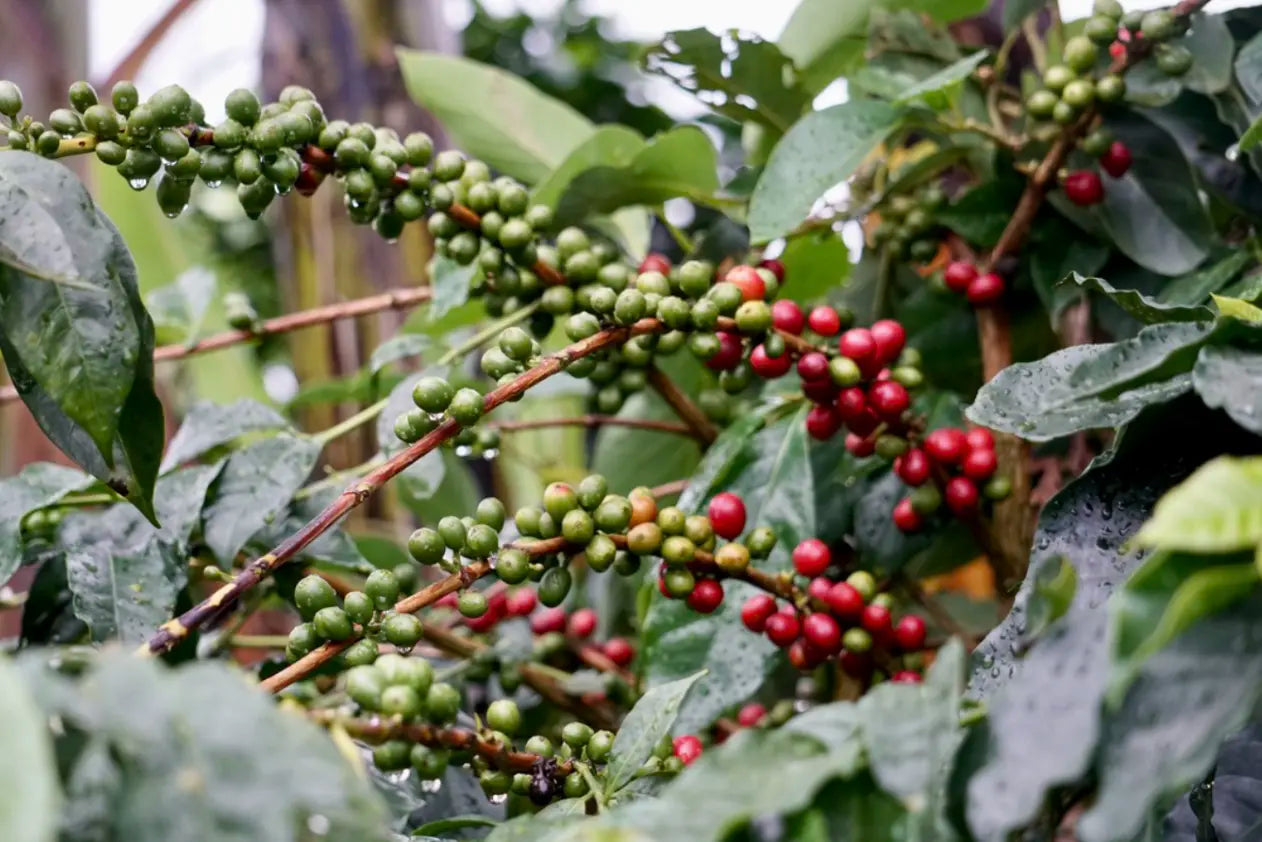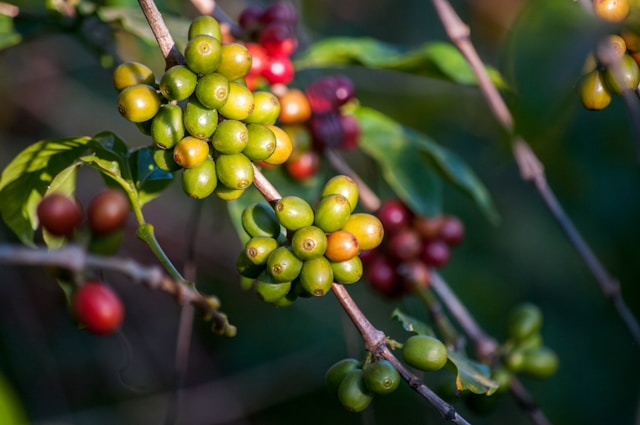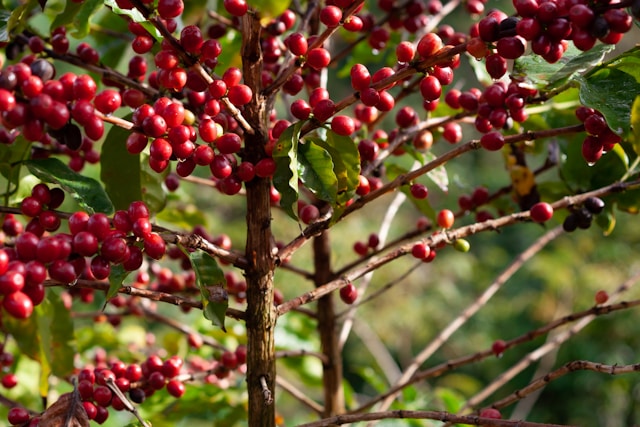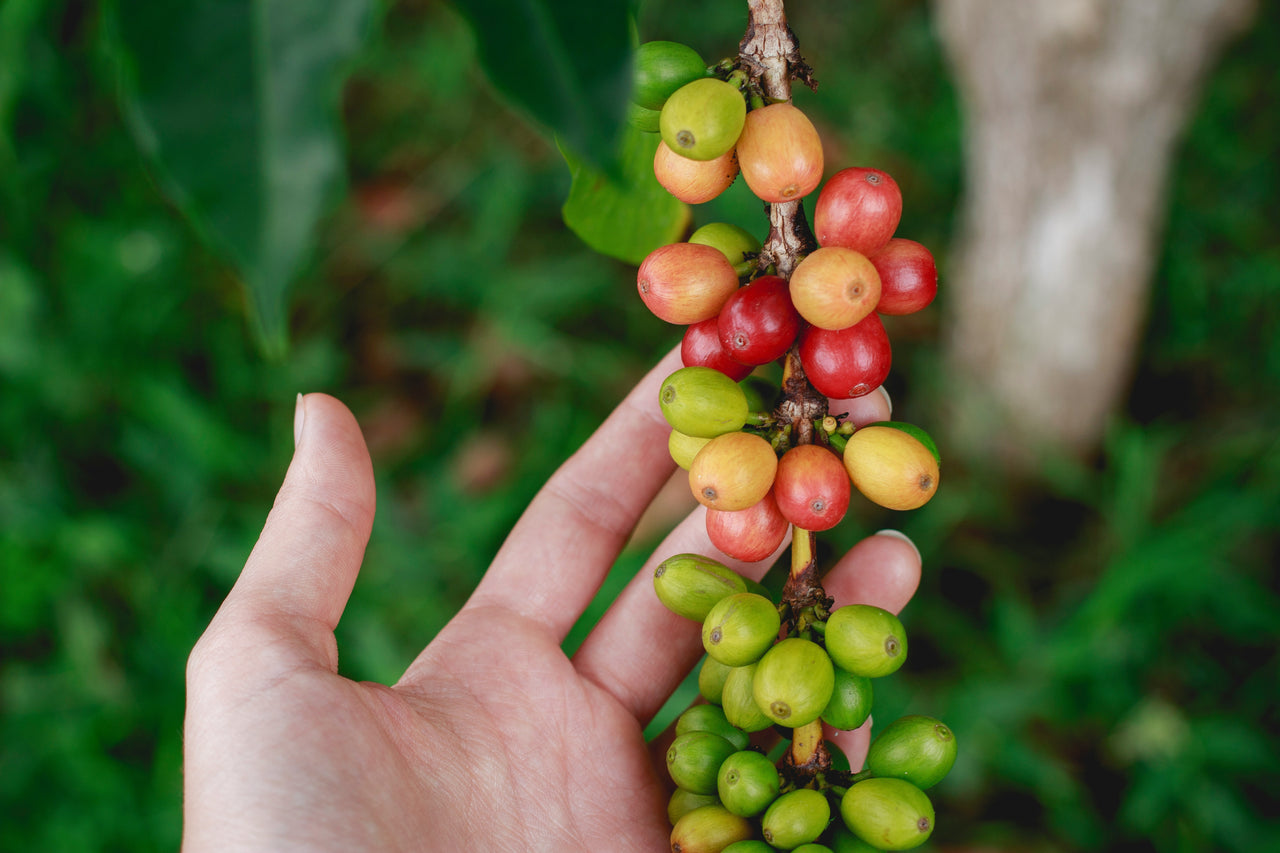Coffee has been a fundamental substance in cultures around the world for centuries, yet we have been underutilizing the most valuable part - THE FRUIT! Chances are, you’ve never seen it nor tried it because this superfruit is considered waste and thrown away at origin...until now.
Before the Bean: The Journey of Coffee Fruit
Coffee fruit, also known as a coffee cherry or coffee berry, is a small, round fruit comparable to the size of a grape. These fruits grow in clusters on small trees, ripening from green to yellow to red to crimson. Once ripe, coffee farmers harvest these fruits to exact the two hidden coffee beans inside.
However, if you were to eat this ripe fruit, you might be surprised by the flavor, as said by the Science of Cooking, “it’s similar to that of other red fruits, like a mild mix of fruits like raspberry, red mulberry, currant, cranberry, cherry, raisin”. Although the fruit does not resemble the familiar coffee flavor, it does have similar properties, most notably the natural caffeine benefits. So what happens to this fruit after the coffee beans are extracted?

Beyond the Bean: The Potential of Coffee Fruit
Traditionally, coffee production focuses solely on the beans, using the fruit as fertilizer or most commonly discarding it as waste. Unfortunately, this creates significant water pollution and carbon emissions tampering with the delicate ecosystem at origin.
However, recent years have seen a surge in interest in this "waste product." Why? Because coffee fruit boasts a treasure trove of potential benefits:
- Rich in Antioxidants and Polyphenols: Coffee fruit is brimming with antioxidants, even exceeding the levels found in green tea! These antioxidants fight free radicals, potentially reducing inflammation and promoting overall health.
- Helps protect your brain: BDNF (brain derived neurotropic factor) is responsible for protecting the neurons in your brain and promoting new growth. Coffee fruit is said to “raise your levels of BDNF'' due to the “procyanidins or polyphenols” (webmd). This essentially helps your memory.
- Sustainable Source of Caffeine: Coffee fruit naturally contains caffeine, but in a gentler, slower-releasing form compared to roasted coffee. This could be a game-changer for those seeking a natural energy boost without the jitters.

Exploring the Future of Coffee Fruit
The potential of coffee fruit is vast, and companies are starting to take notice. We're seeing coffee fruit teas, juices, energy bars, and even skincare products emerge. This newfound appreciation could revolutionize the coffee industry, creating a more sustainable and resource-efficient future.
THE OTHER SIDE OF COFFEE is one drink making the charge, serving as the first and only beverage to use fresh coffee fruit. Their 12oz cans highlight the strength of the superfruit, containing 223mg of polyphenols, 20 calories and 3 grams of sugar. Additionally, it contains a mild 30mg of natural fruit caffeine, serving as an afternoon pick-me-up.
So, the next time you sip your coffee, remember the journey it took. And keep an eye out for coffee fruit products – they might just surprise your taste buds and your well-being!





